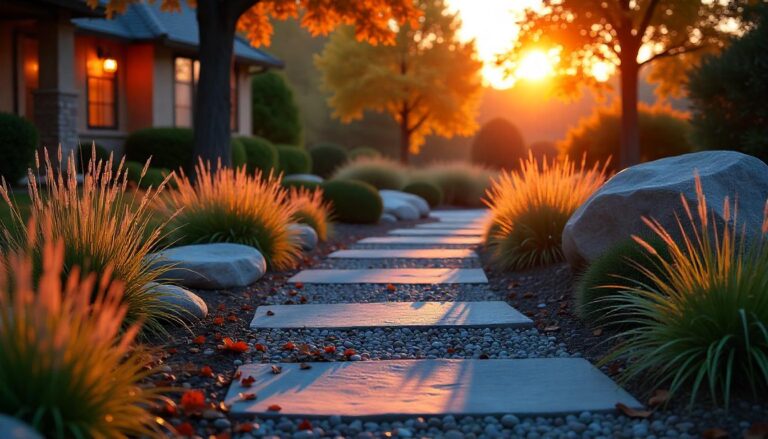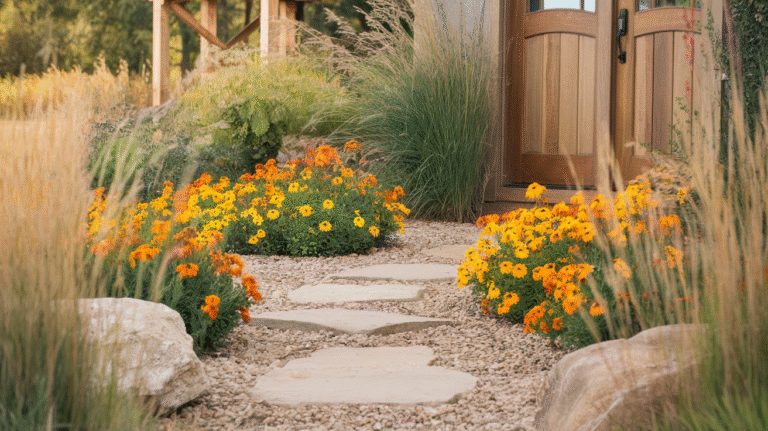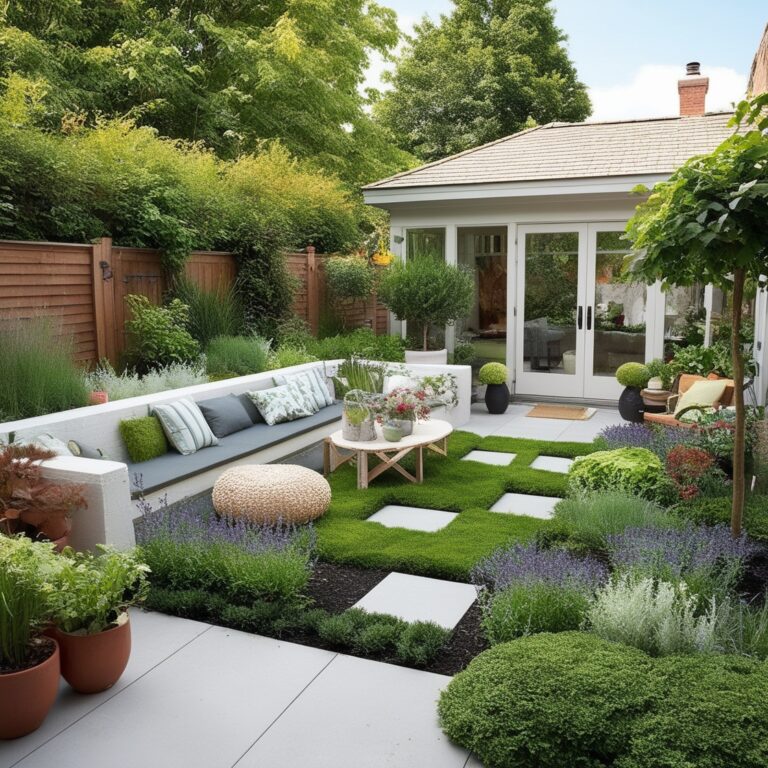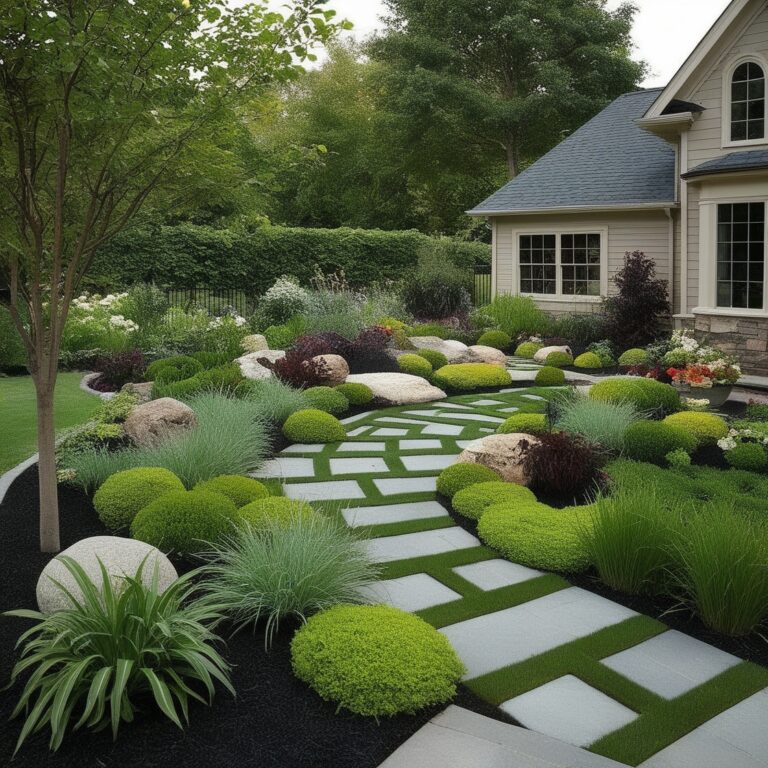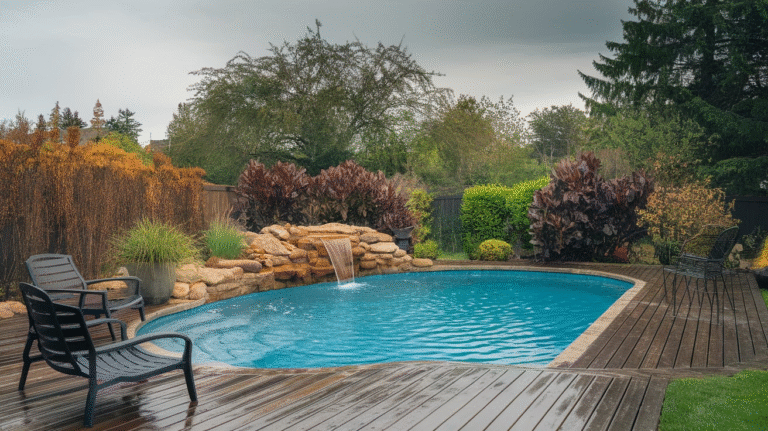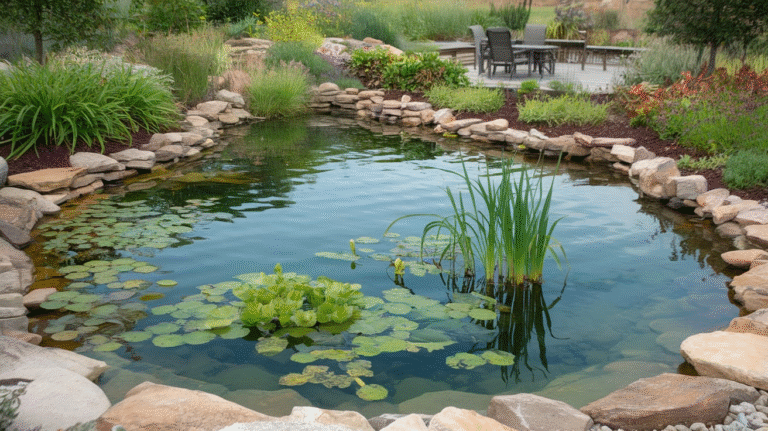24 Hillside Landscaping Ideas
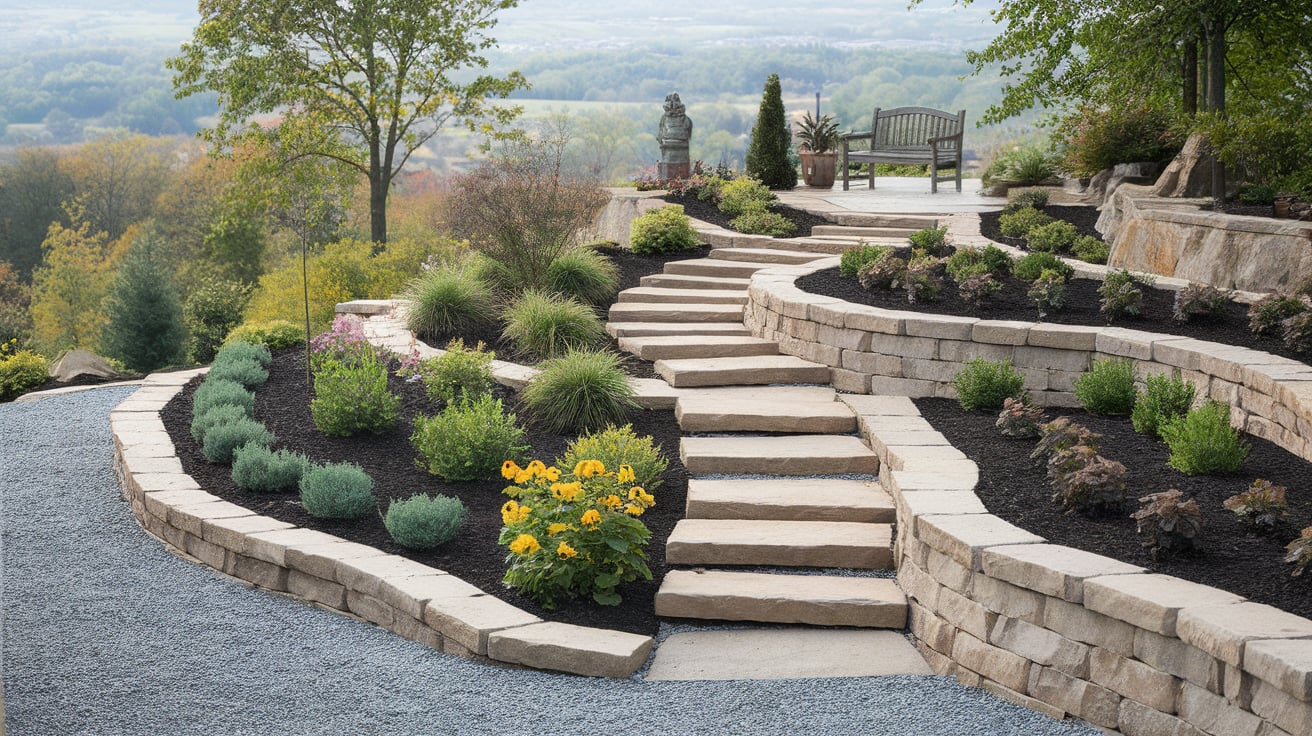
If you’ve got a sloped backyard, you know the struggle—mowing feels like a gym workout, water runoff makes planting tricky, and creating a cozy outdoor hangout feels almost impossible.
But here’s the truth: hillside yards are hidden gems.
With the right landscaping ideas, that tricky slope can become a layered masterpiece of textures, terraces, and jaw-dropping views.
I’ve helped design more than a few hillside gardens (and yes, I’ve had the pleasure of tumbling down a muddy slope once or twice), and this list is packed with 24 real, tested, creative ideas that turn a challenging hill into an asset.
Let’s dig in.
Tiered Garden Beds
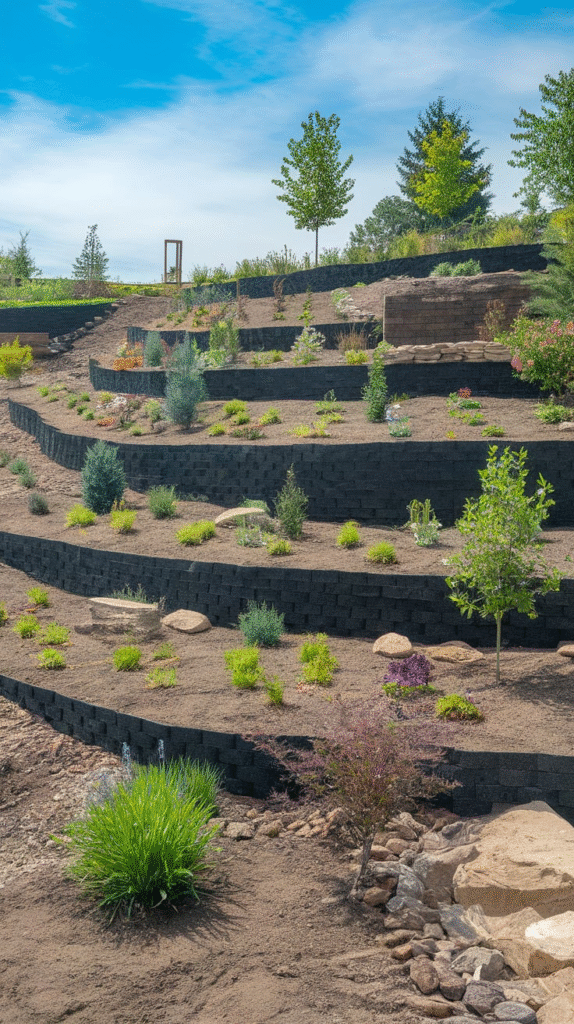
Instead of fighting gravity, embrace it. Terracing a hill with raised garden beds gives you multiple “mini yards” to play with.
Each tier can have a theme: one for herbs, another for native wildflowers, another for ornamental grasses.
This breaks the slope visually and gives your plants better water retention.
I helped my neighbor Frank do this with old railroad ties, and now his hillside looks like a garden from a Tuscan villa—complete with basil and rosemary wafting in the breeze.
Retaining Walls with Personality
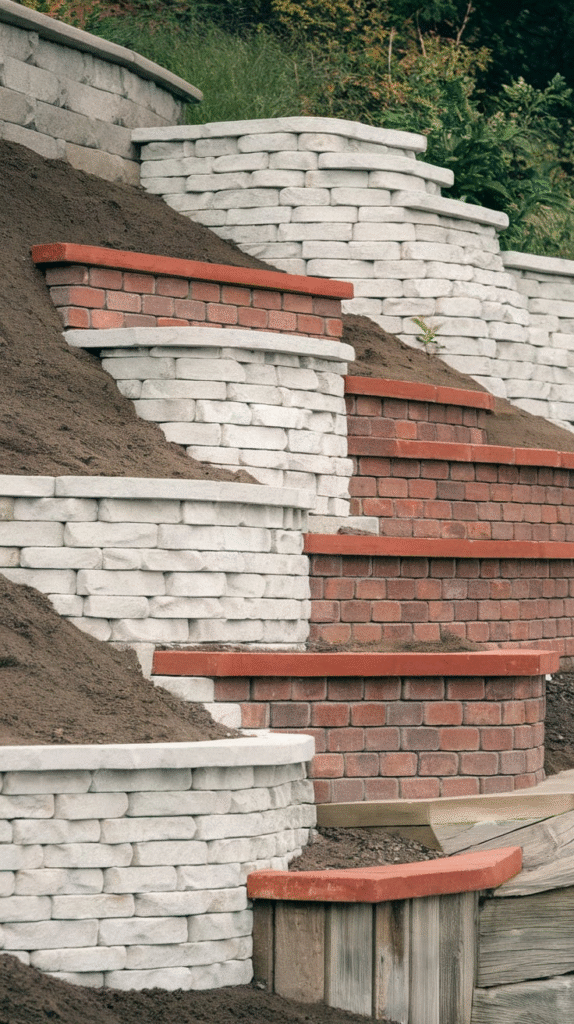
Retaining walls don’t have to look like drab gray barriers.
Use natural stone, timber, or even corten steel to craft walls that double as artistic statements.
They hold back the slope and create flat spaces for planting or entertaining.
Pro tip: Curved retaining walls soften the landscape and blend better than sharp, straight lines.
And a well-built wall can last 50+ years with minimal upkeep—an investment that pays off.
Staircase Garden
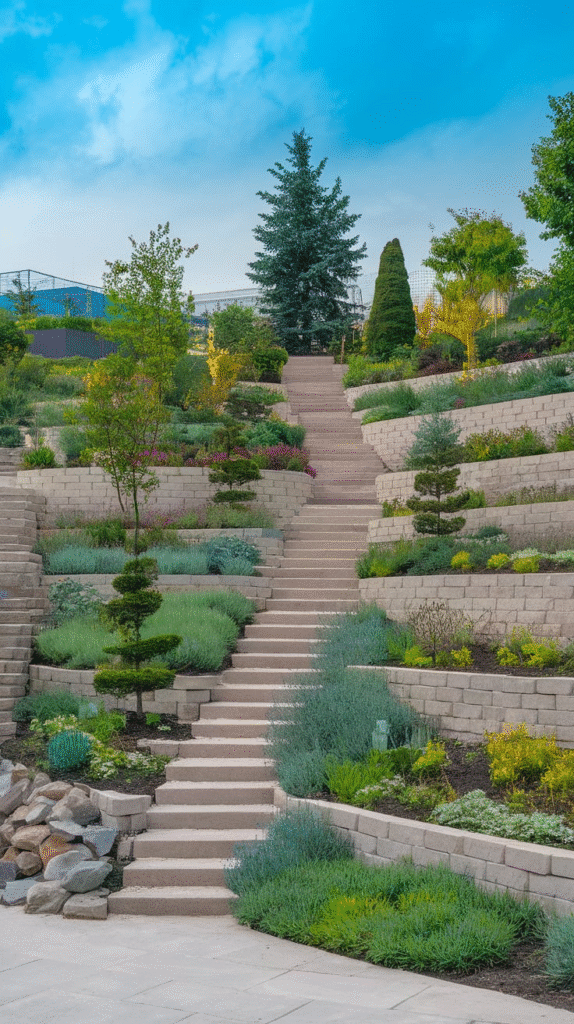
Build stone or timber steps right into your hill, and line them with plants like lavender, creeping thyme, or ornamental grasses.
It’s both functional and magical—every step feels like an invitation into nature’s theater.
Stats say property values can increase by up to 12% with well-integrated landscaping features like stone staircases.
Bonus: No more muddy boots sliding downhill.
Cascading Waterfalls
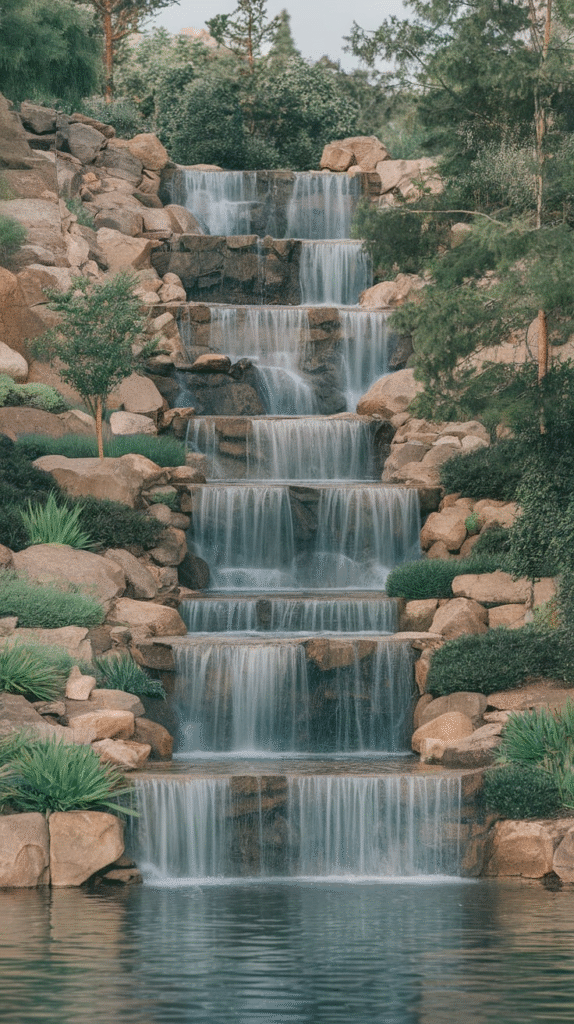
Water always flows downhill—why not use that to your advantage? Install a tiered waterfall or stream, starting from the top of your slope and flowing into a pond or basin.
The sound alone is worth it—like a spa for your ears.
Studies show water features reduce stress and increase property desirability, especially in warmer climates.
Ground Cover Champions
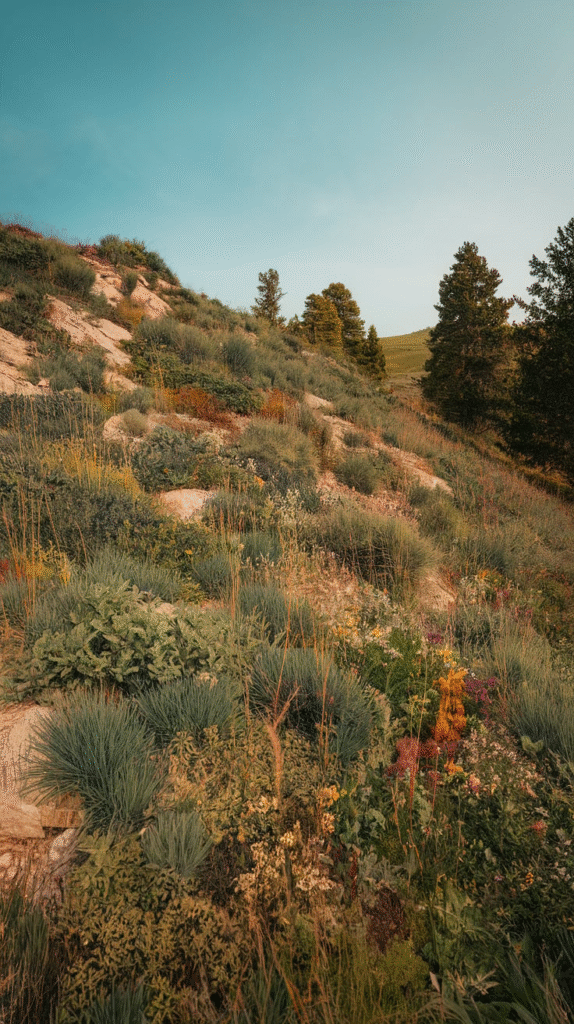
Let me tell you: if you’re tired of mowing a steep hill, ground covers are your best friends.
Think creeping phlox, juniper, or sedum—they spread, suppress weeds, and look lush all year.
I once replaced my cousin’s sloped lawn with woolly thyme. Now she gets compliments from strangers walking by.
Plus, no more lawn mowing gymnastics.
Hillside Fire Pit Hangout
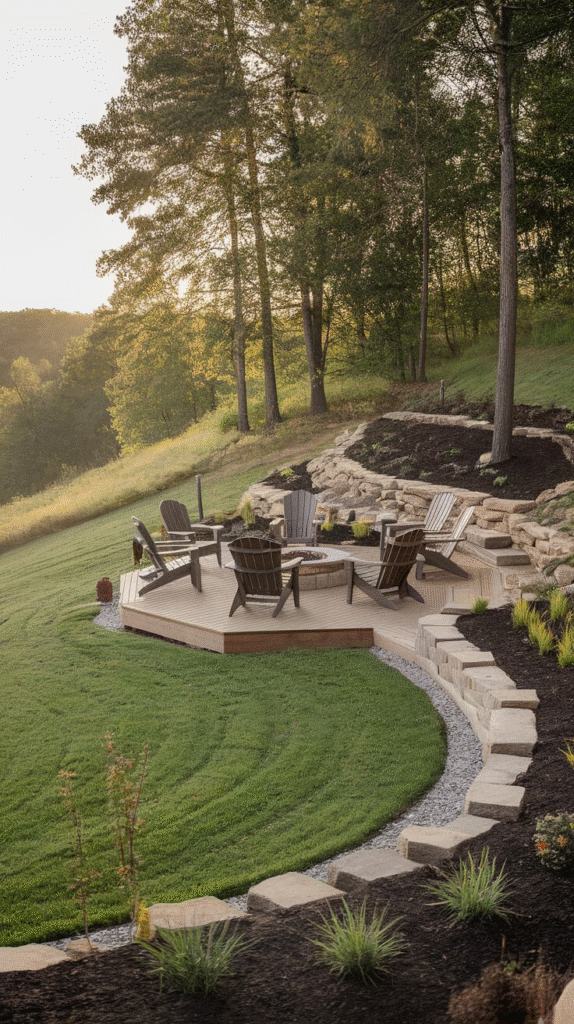
Carve out a terraced nook with a fire pit surrounded by gravel, benches, and cozy lighting. It’s like your own outdoor amphitheater.
This setup works especially well if your slope has a natural “bowl” shape.
According to the American Society of Landscape Architects, fire features are one of the top three requested backyard features—and a hillside gives you the perfect elevation for wind protection.
Native Plant Zones
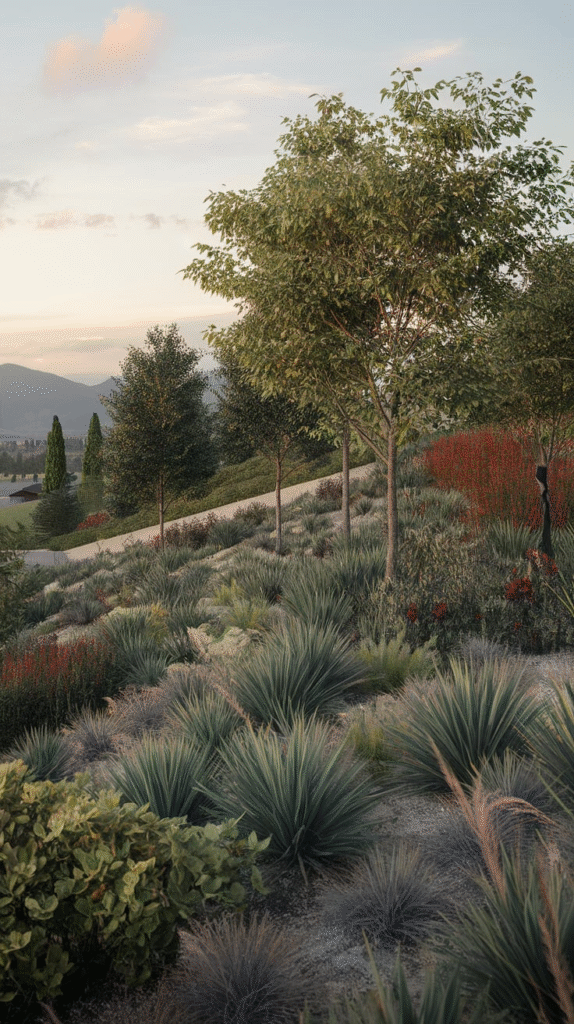
Use zoning to your advantage by planting native species that thrive at different parts of your slope.
For example, drought-tolerant plants like yarrow and sagebrush do great up top, while ferns and hostas love shady lower zones.
Native plants save on water, resist pests, and cut your maintenance time in half.
Plus, you’ll attract local wildlife, which turns your hill into a living ecosystem.
Stone Pathways That Meander
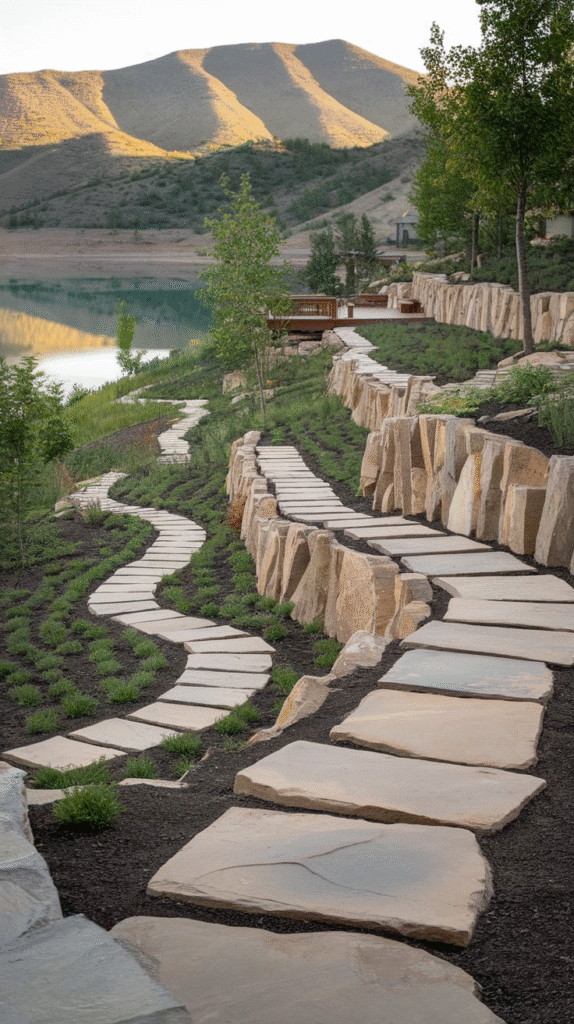
Forget straight lines. Winding stone paths make a hillside feel like a storybook trail.
Use natural flagstone or decomposed granite to make a path that dances through your slope.
Add solar lanterns for nighttime drama, and plant fragrant herbs along the way.
It’s like walking through your own enchanted garden every evening.
Deck with a View
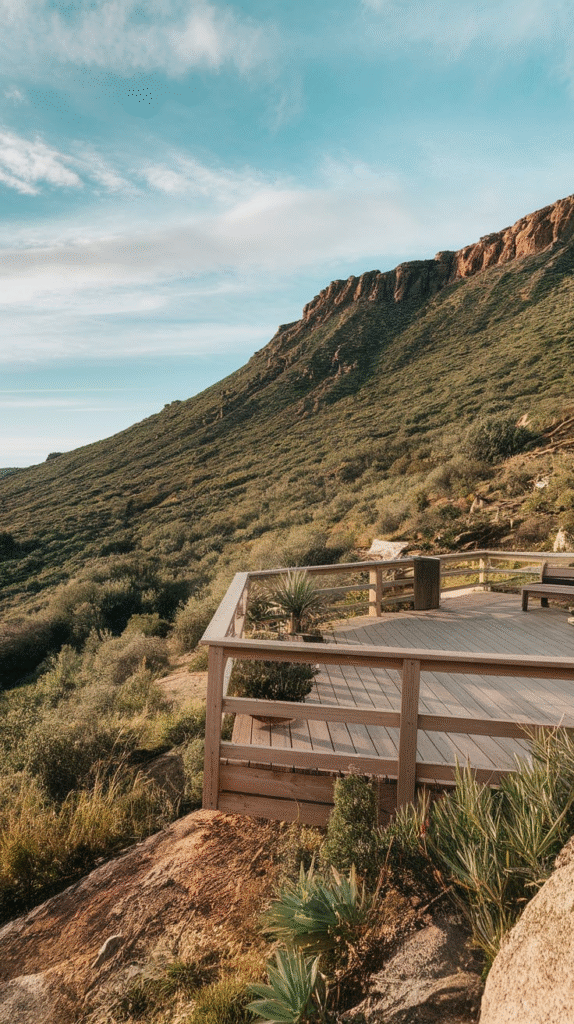
Build a raised deck or platform right into the slope.
This gives you a panoramic view of your yard (or even the valley beyond) and adds usable space without major excavation.
A well-designed hillside deck can increase your home’s resale value by up to $9,000, depending on location and materials used.
Add some Adirondack chairs and a glass of iced tea—you’ve got your new favorite spot.
Wildflower Meadow
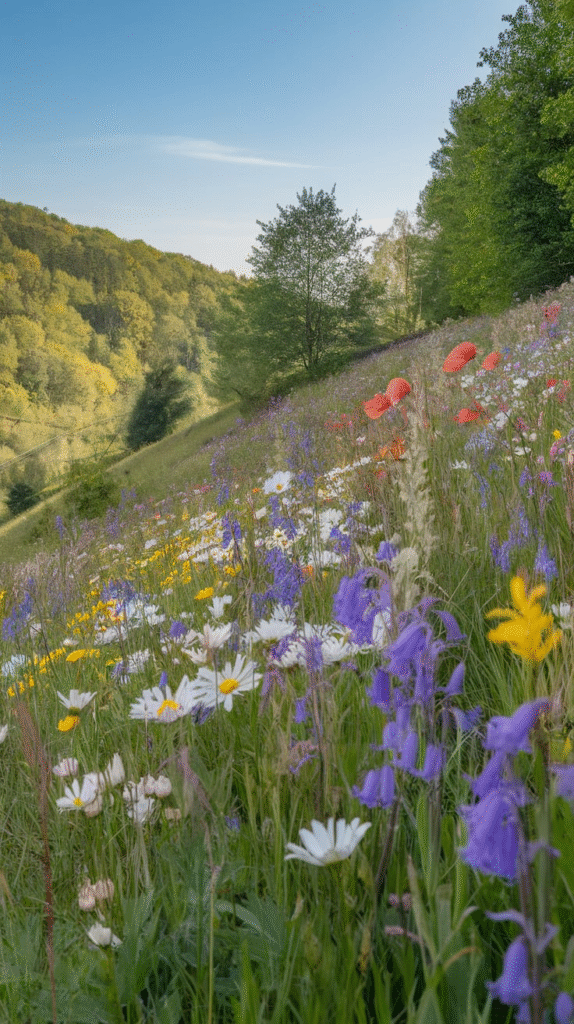
Sow a mix of wildflowers suited to your climate and let nature do its thing.
These meadows require less water, no mowing, and bring in bees, butterflies, and beauty.
Choose native blends—many nurseries offer seed mixes specifically for slopes. The best part? It’s basically self-sustaining after the first season.
Gabion Walls
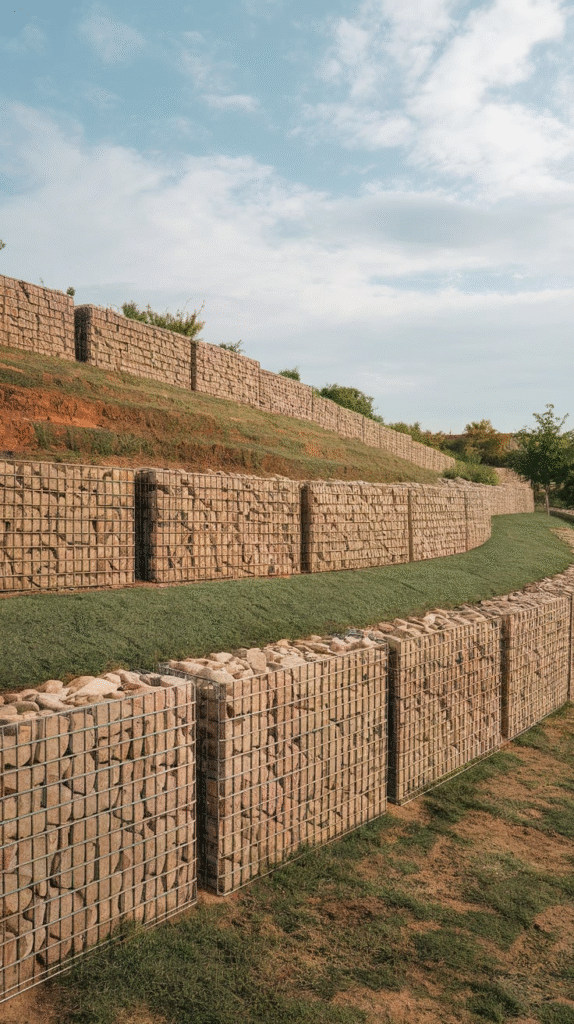
Want something modern and rugged? Gabion walls (those steel cages filled with rocks) are a stylish and durable way to hold soil and add an industrial chic vibe to your landscape.
They’re also budget-friendly and incredibly strong.
Builders love them for hillside properties with drainage issues—they’re functional armor that doubles as sculpture.
Fruit Tree Terraces
Create tiered orchards with dwarf apple, peach, or fig trees.
A slope means better drainage and sunlight, which most fruit trees love.
And let’s be real: There’s something deeply satisfying about picking a fresh peach while standing in your backyard.
It’s like your hill is working for you.
Privacy Planting
Slopes often mean exposure—your neighbors might see more than you’d like.
Plant bamboo, cypress, or tall ornamental grasses in strategic zones to create natural green walls.
Within a season or two, you’ll feel like your hillside is wrapped in a leafy hug. Bonus: You’ll hear less street noise too.
Pergola Overlook
At the top of your hill, build a pergola with seating and lighting.
Add climbing vines like wisteria or grapevines and watch it become the most romantic spot on your property.
I helped a friend do this on her hillside—within months, she had a full-on wine-and-cheese pergola party zone with views of the stars.
Sloped Vegetable Garden
Yes, you can grow food on a hill.
Use contour gardening techniques to plant tomatoes, zucchini, or even potatoes along curved beds that follow the slope.
With the right mulch and drip irrigation system, you’ll get better drainage and healthier yields.
Trust me, there’s nothing like a tomato that grew with gravity on its side.
Lighting That Climbs
Use low-voltage uplights, step lights, or solar lanterns to highlight your hillside’s layers and textures.
This creates dimension after dark and makes your landscape come alive at night.
One client said their hill looked like a “living painting” after we lit it. Subtle lighting along steps and walls also improves safety.
Rock Garden Bliss
Slopes are ideal for rock gardens, especially in dry climates. Combine succulents, boulders, and gravel for a low-maintenance masterpiece.
Use different rock sizes for texture, and tuck plants like hens and chicks or blue fescue between them.
This is nature’s zen zone—minimal upkeep, maximum impact.
Vertical Planters and Wall Art
Install vertical planting panels or wall art on retaining walls to make the most of vertical space.
You can grow strawberries, succulents, or even lettuce in wall-mounted pockets.
It’s also a sneaky way to bring art into your garden.
One client installed colorful ceramic tiles in between their planters—it turned a gray wall into a gallery.
Seating Built Into the Slope
Instead of bulky furniture, build benches into your retaining walls or slope contours.
It looks clean, saves space, and turns every level into a hangout zone.
Think curved stone seating around a fire pit or timber benches with built-in planters behind. It’s like your hill was designed for socializing.
Butterfly & Pollinator Garden
Dedicate a portion of your hill to pollinator-friendly plants—milkweed, echinacea, bee balm, and goldenrod.
These bring in essential insects, including monarchs and native bees.
It’s not just pretty—your whole garden will thrive when the pollinators move in.
It’s like nature sending in her secret service team to guard your blooms.
Mulch and Stone Mulching for Control
Hills are notorious for erosion.
Use heavier mulch like bark nuggets or shredded hardwood, combined with stone mulch to hold everything in place.
Studies show organic mulch reduces erosion by up to 85% on slopes.
That’s your hill’s armor—and it keeps weeds at bay while feeding your soil.
Hidden Play Zones
Got kids? Hillsides are a goldmine for creative play areas.
Build a climbing wall, a hillside slide, or even a hobbit-style playhouse tucked into the slope.
One couple I worked with added a built-in trampoline halfway up the hill.
Their kids think it’s magic—and they don’t realize it’s also brilliant use of vertical space.
Rain Garden at the Base
Use the bottom of your slope as a catchment area with a rain garden full of water-loving plants.
It filters runoff, reduces erosion, and looks like a lush oasis.
This helps with drainage and supports sustainability. Rain gardens can reduce local runoff by up to 30%, and you’ll save on water bills too.
Mix Hardscape and Softscape
The best hillside landscapes blend hard surfaces like stone, wood, or steel with plants for softness and contrast.
Use gravel paths, boulder steps, or retaining edges alongside draping plants for a high-design feel.
This combo keeps things low-maintenance and visually dynamic. It’s a bit like pairing denim with silk—effortless balance.
If your hillside yard has felt like more of a liability than a luxury, I hope this list showed you it’s really just waiting to become your backyard’s crown jewel.
Whether you’re dreaming of waterfalls, wildflowers, or a fire pit with a view, your slope has space for something stunning.
So grab your gloves, sketch out your favorite ideas, and let the hill work with you—not against you.
You’re not just landscaping—you’re composing a hillside symphony. And it’s going to be a masterpiece.
Let me know if you want help planning out a few of these ideas in more detail or need plant suggestions for your region—I’ve got plenty of garden secrets up my sleeve.

